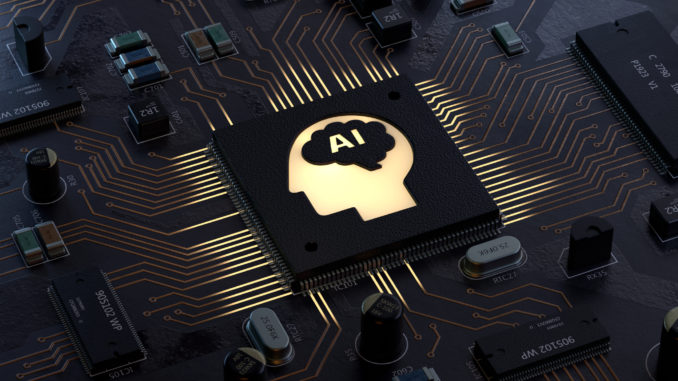
ChatGPT, a familiar name in the public sphere, merely scratches the surface, concealing boundless opportunities within the realms of deep learning and generative artificial intelligence. While prudence is warranted, generative artificial intelligence is likely to lead to the rise of fresh business prospects in the short, medium, and certainly the long term.
We recently visited with Eva Jaidan, PhD, Lead Data Scientist – AI & Analytics, MEGA International to learn more.
Question: What is Generative Artificial Intelligence?
Answer: Although artificial intelligence has been a topic of discussion for several years now, its popularity has skyrocketed with the highly publicized arrival of ChatGPT. Within a few days, everyone had heard about AI and its generative capabilities. This is indeed generative artificial intelligence, meaning it can create information in various forms (text, photos, code, etc.) from sources it has previously integrated. These can take multiple forms, including text, images, videos, code, or even a map of an information system.
The capabilities of generative artificial intelligence result from tremendous progress made over the past decades, with the ultra-fast deployment of the Internet, data (big data), and the computing abilities of machines. Beyond the results (the generated content), the AI’s ability to rapidly and fully absorb vast amounts of information is its most commendable feat. Within seconds, the machine can “read” and record a phenomenal number of sources, to use them later.
By surpassing human abilities in this way, generative artificial intelligence opens infinite possibilities in terms of supporting human activities: quick and accurate identification of weak signals in information sources, decision-making support, and so much more.
The main goal of generative artificial intelligence is to generate value and improve the user experience. Thus, the elimination of tedious or repetitive tasks significantly improves daily life and in a work setting, allows employees to focus on high-value-added actions. In this regard, all sectors of activity and functions of organizations are potentially affected – including IT departments, which should not be overlooked in the deployment of generative AI projects.
Q: Beyond ChatGPT: Securing Professional Use Cases
A: For personal or even non-sensitive professional projects, ChatGPT can meet needs without risk. In its free version intended for the public, ChatGPT plans to absorb information provided by users, potentially reusing it for other users’ requests. This is the reason for OpenAI’s paid version of GPT, also developed on Microsoft Azure. This version plans to secure user organizations’ data on private instances, accessible via API.
The aim of this source data confidentiality is to eliminate any risk of leakage or information theft. But it’s not just about that, it also involves protecting the generated content. In terms of intellectual property, for instance, the code generation of a new program should remain the company’s property. The same applies to information protection: public disclosure of an information system map could have catastrophic consequences for the organization, exposing it to potential threats that could easily infiltrate the system.
More generally, one must remain sensible: generative AI is not the answer to everything. It has genuine utility in some cases but may prove utterly useless in others. It’s crucial to prioritize the most relevant use cases so that AI projects are both effective in the expected service and profitable. In addition, it’s essential to maintain some ethics despite the absence of regulatory oversight, which will undoubtedly develop in the coming years.
Q: Business Value and ROI at the Heart of Professional Generative AI Projects
A: Beyond the attraction to the technology itself, generative AI has huge potential business value. Regardless of the processes, professions, or sectors of activity involved, the common thread among artificial intelligence projects is their shared objective of enabling, expediting, or enhancing human actions, either by facilitating or accelerating them.
The use of AI usually starts with a question, or a problem. This is immediately followed by the analysis of a significant amount of exogenous information (as is the case with ChatGPT) or endogenous information (information from the company itself), with the aim of obtaining an answer to the question or problem through the creation of information useful to humans: aiding decision-making, detecting an anomaly, analyzing a hand-drawn schema, prioritizing problems to be solved, etc.
More broadly, the automated generation of information makes it easier and safer to streamline some processes, such as moving from an idea to a first version by allowing for quicker validation or failure recognition, A/B testing, and simplified re-experimentation. Similarly, generative AI can be a valuable aid in identifying anomalies or incidents in an industrial or IT process, for example.
In all AI use cases, the business goal is often the same: to increase efficiency, productivity, and added value. Another use case for AI is to assist teams in their daily tasks, perform certain actions, and alleviate some mental load. There is growing speculation that generative artificial intelligence might even have the potential to mitigate the risk of burnout.
However, it’s important to keep a cool head: the technology of generative artificial intelligence and its uses are still in its infancy, and a critical view of the responses or recommendations provided is essential. User training will have to accompany the deployment of generative AI projects, while impact studies will have to be carried out regarding their potential consequences on employment.
Finally, before investing in such projects, the question of ROI needs to be considered. This involves considering both direct costs and benefits, such as technological costs, time spent, efficiency and productivity gained, as well as indirect costs and benefits, such as compensation for recruitment difficulties, for example.
